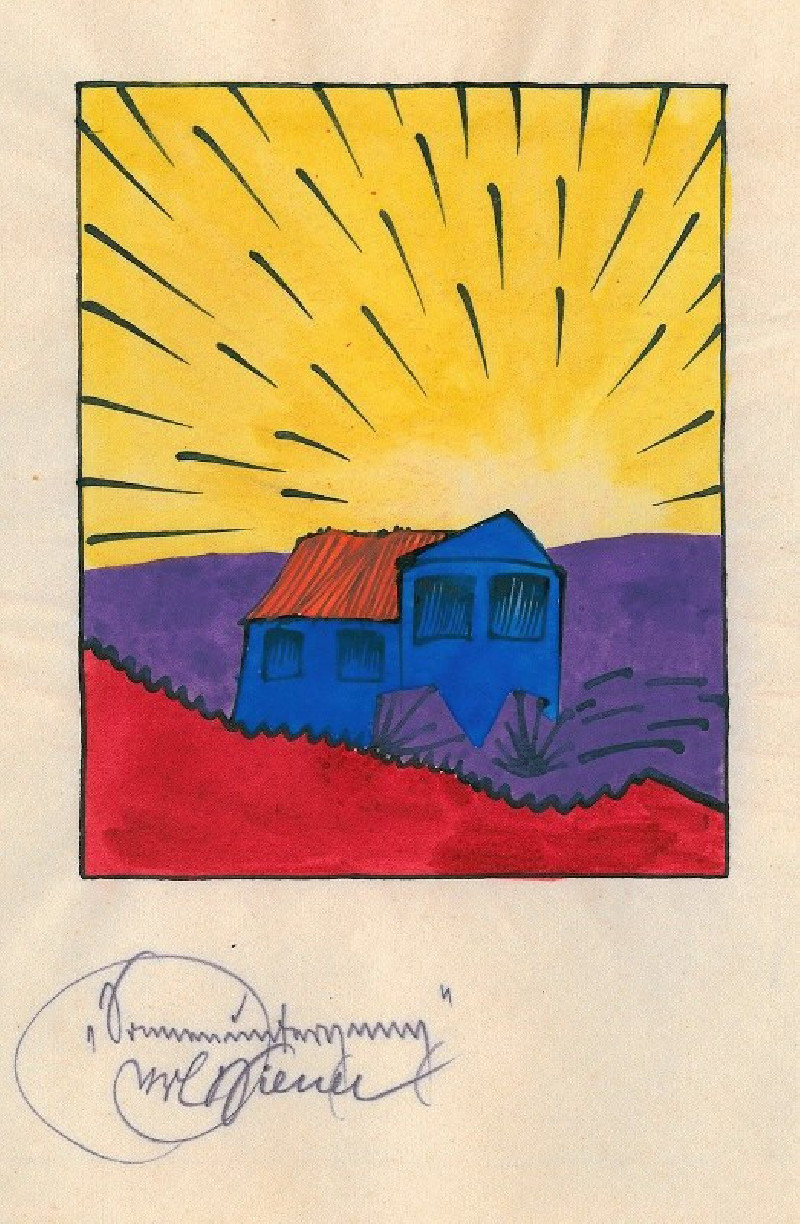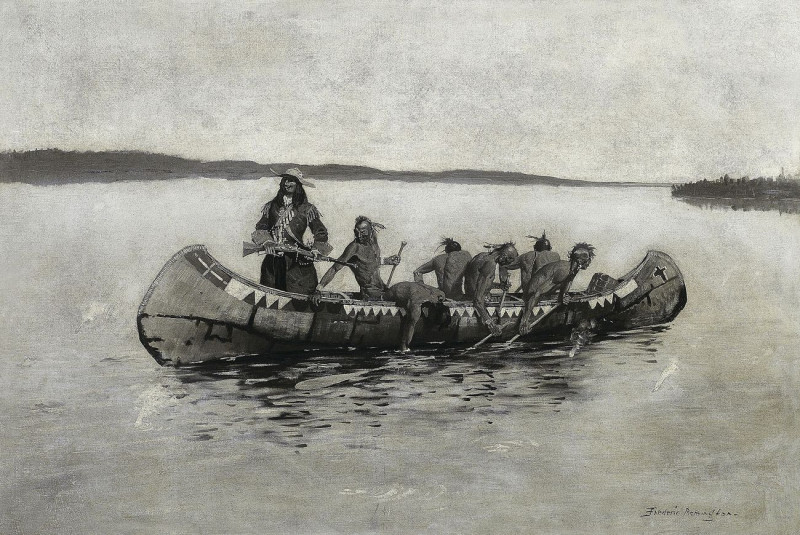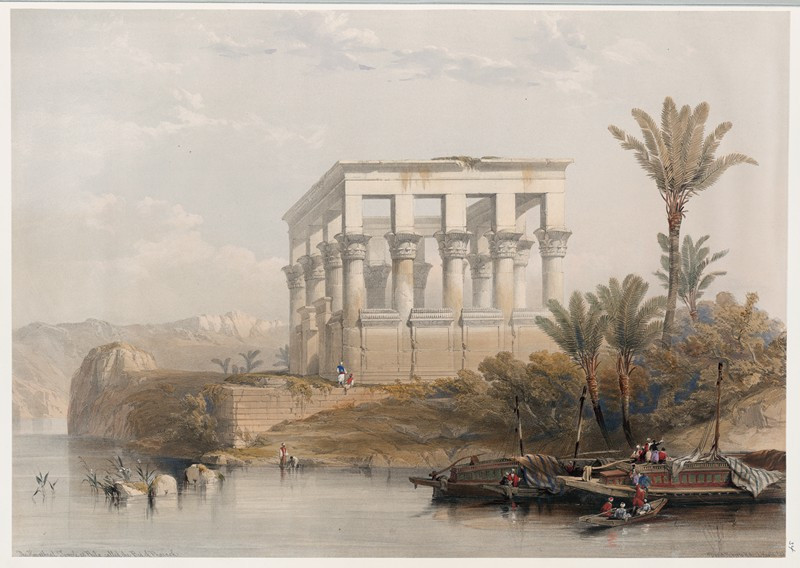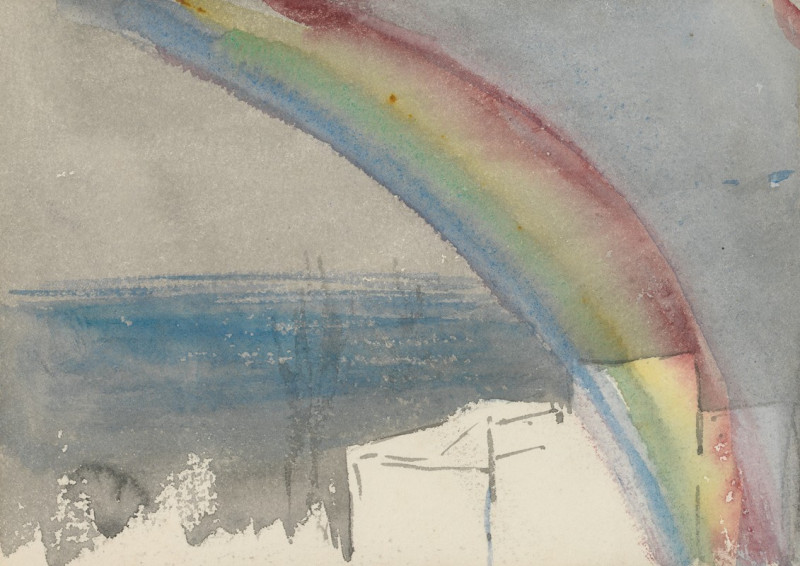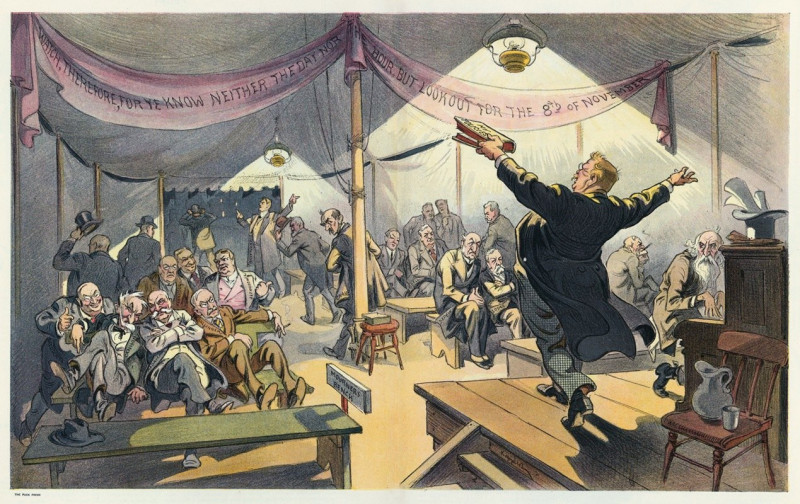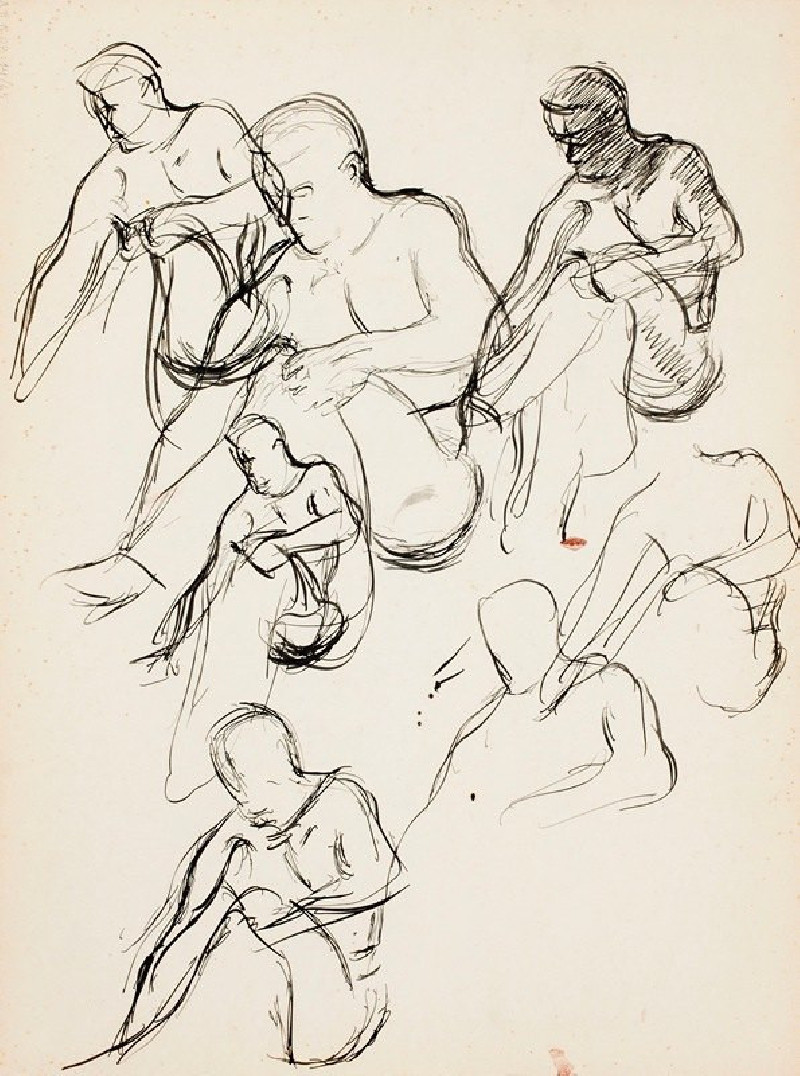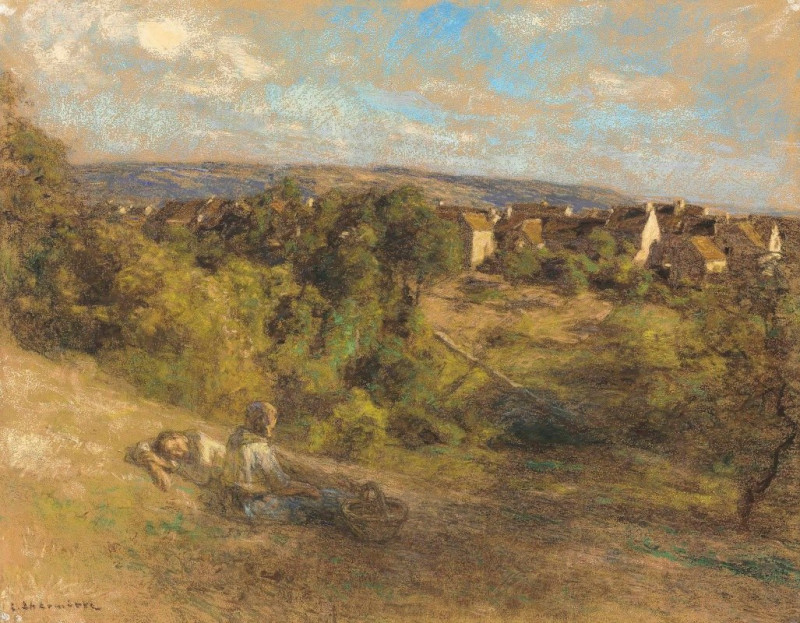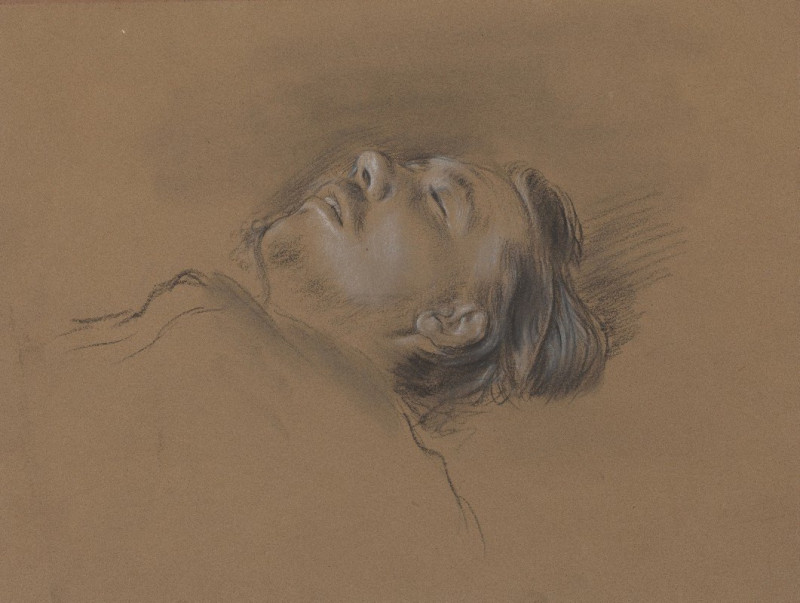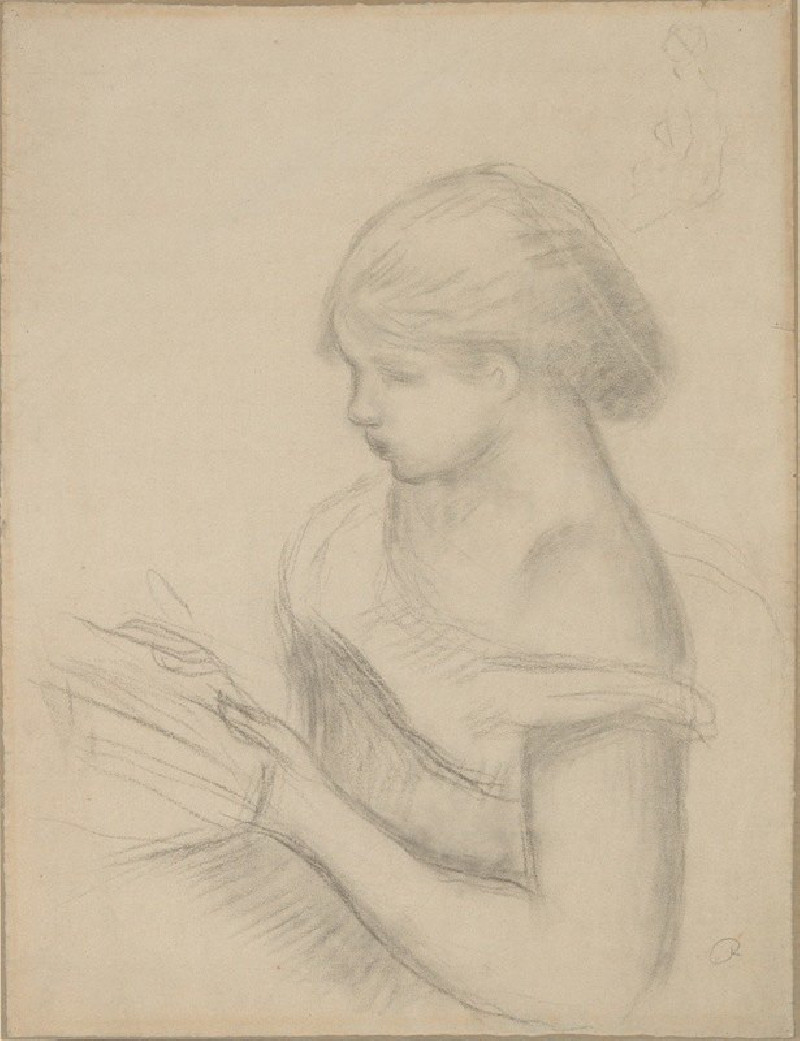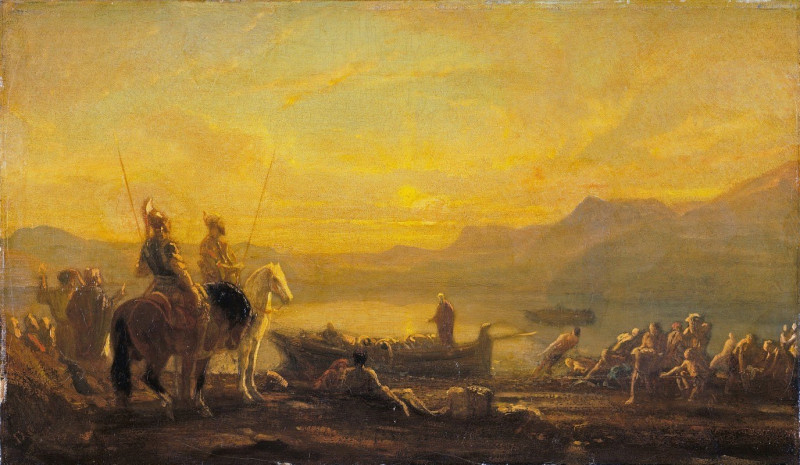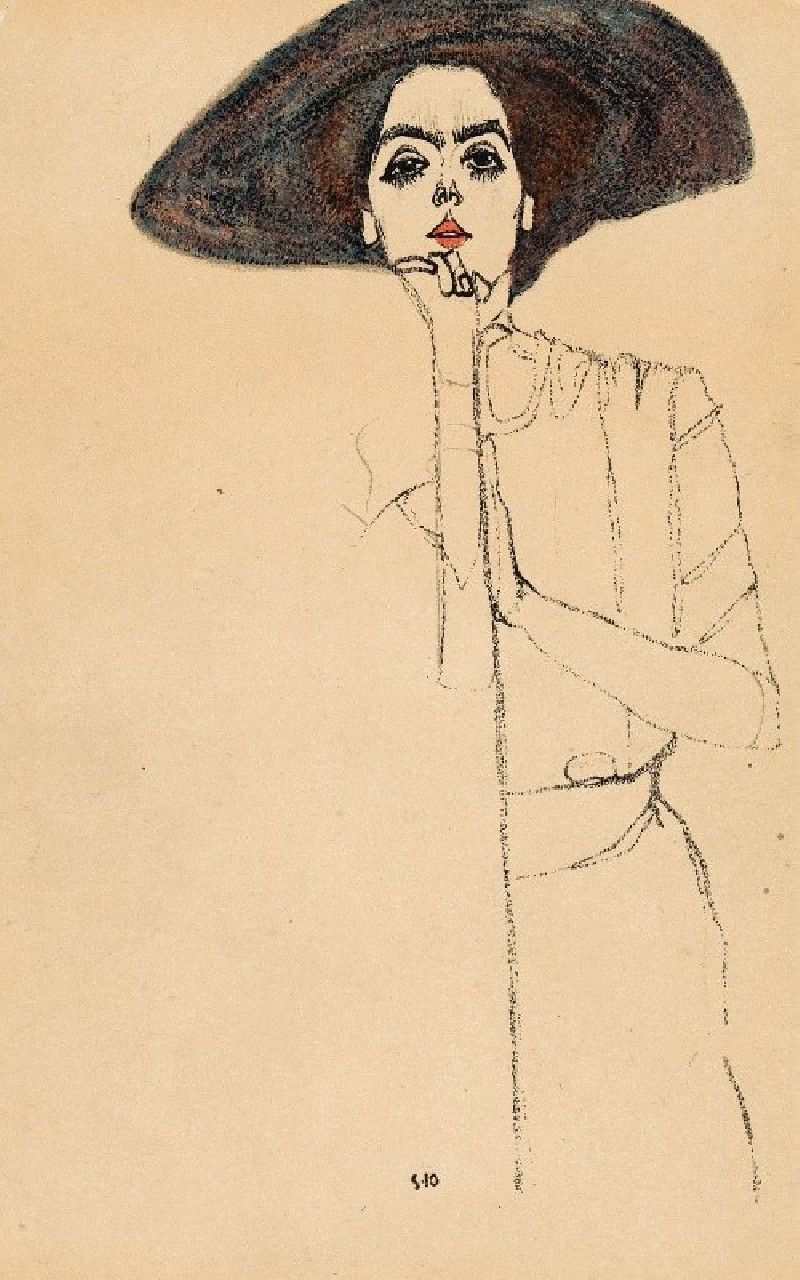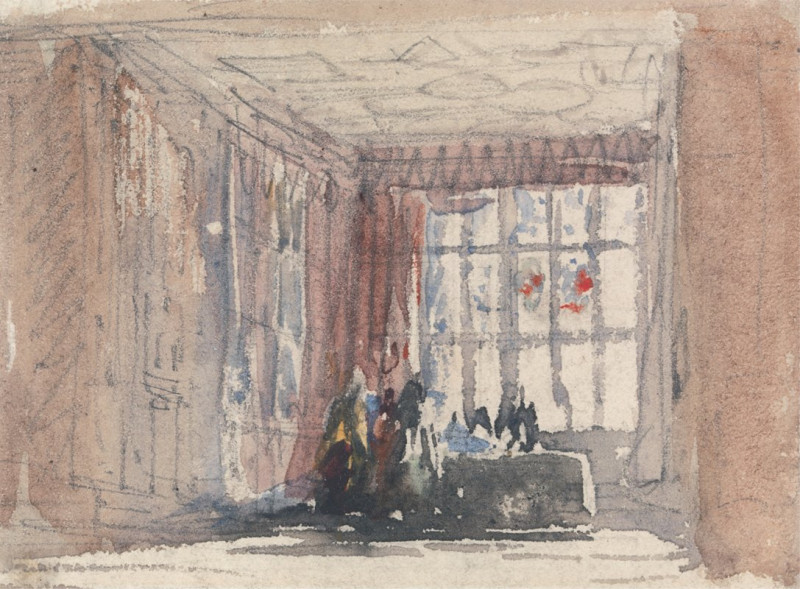Sonnenuntergang (around 1921)
Technique: Giclée quality print
Recommended by our customers
More about this artwork
"Sonnenuntergang," translating to "Sunset" in English, is a captivating piece by Austrian artist Karl Wiener, crafted around 1921. This painting is a vibrant exploration of color and simple forms, delivering a rich visual experience. At the heart of Wiener's composition is a quaint, stylized blue house with a striking orange roof, situated amidst a vivid landscape. The background unfolds in layers of deep purple and bold red, suggesting a lively yet serene twilight.Dominating the skies above the serene landscape is a radiant, expansive sun, depicted through dynamic yellow rays bursting across the canvas. This element not only highlights the sunset theme but also infuses the scene with a sense of energy and movement. The use of strong, contrasting colors and straightforward geometric shapes makes "Sonnenuntergang" an exceptional example of early 20th-century expressionism.This piece reflects Wiener’s unique ability to blend simplicity with profound emotional depth, making "Sonnenuntergang" not just a mere depiction of a sunset, but a profound celebration of nature’s daily spectacle.

